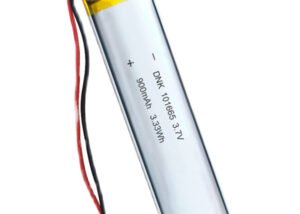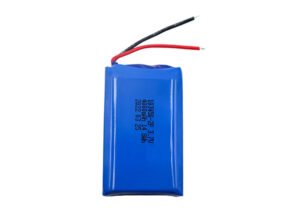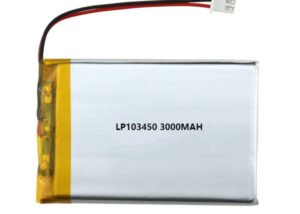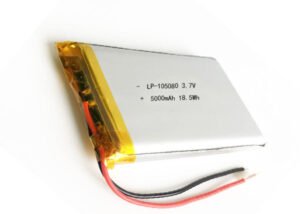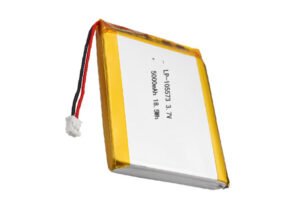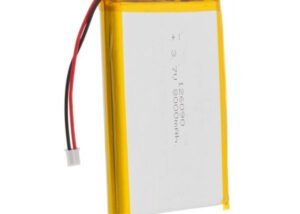Lipo Battery in Fish Food Device
Fish keeping is a popular hobby among many people. It is a great way to relax and take care of living beings while adding beauty to your home or office. One of the most important aspects of fish keeping is feeding the fish. Feeding the fish manually can be a hassle, especially if you have a busy schedule. The Fish Food Device is a device that has been designed to simplify the feeding process for fish keepers. The device is powered by a LiPO battery, which is essential for its operation. In this article, we will discuss the importance of LiPO battery in the Fish Food Device, how it works, and how to maintain it.
What is LiPO battery?
LiPO (Lithium Polymer) battery is a rechargeable battery that is commonly used in electronic devices. It is a type of lithium-ion battery that uses a polymer electrolyte instead of a liquid electrolyte. The polymer electrolyte makes the battery safer and more flexible than other types of batteries. LiPO batteries work by storing energy in the form of lithium ions. The battery consists of two electrodes, an anode, and a cathode, separated by a polymer electrolyte. When the battery is charged, lithium ions move from the cathode to the anode, and when it is discharged, the ions move from the anode to the cathode, producing electrical energy.
Advantages of using LiPO battery
LiPO batteries have several advantages over other types of batteries. They are lightweight, flexible, and have a high energy density. They are also rechargeable, which makes them environmentally friendly and cost-effective in the long run. LiPO batteries are widely used in electronic devices such as smartphones, laptops, and drones.
LiPO battery in Fish Food Device
The Fish Food Device is a device that automatically feeds fish at a pre-set time. The device is powered by a LiPO battery, which is essential for its operation. The LiPO battery provides the necessary energy to power the motor that dispenses the fish food. Without the LiPO battery, the device would not function.
How the LiPO battery powers the device?
The LiPO battery is connected to a circuit board that controls the motor that dispenses the fish food. When the device is turned on, the circuit board sends a signal to the motor, which starts to rotate. The motor rotates a wheel that dispenses the fish food. The LiPO battery provides the necessary energy to power the motor and rotate the wheel.
Benefits of using LiPO battery in Fish Food Device?
Using a LiPO battery in the Fish Food Device has several benefits. Firstly, LiPO batteries are lightweight, which makes the device easy to transport and install. Secondly, LiPO batteries have a high energy density, which means that they can provide a lot of energy in a small package. This is important for the Fish Food Device, which requires a lot of energy to power the motor that dispenses the fish food. Finally, LiPO batteries are rechargeable, which makes them cost-effective in the long run.
Maintenance of LiPO battery in Fish Food Device
CHARGING AND DISCHARGING
To maintain the LiPO battery in the Fish Food Device, it is important to charge and discharge it properly. LiPO batteries should be charged using a charger that is specifically designed for LiPO batteries. Overcharging or undercharging the battery can damage it and reduce its lifespan. LiPO batteries should also be discharged properly to avoid damaging the battery. The Fish Food Device has a low voltage cut-off feature that prevents the battery from discharging too much.
STORAGE AND TRANSPORTATION
LiPO batteries should be stored and transported properly to avoid damage. They should be stored in a cool, dry place away from direct sunlight. They should also be transported in a sturdy container that provides protection against impact and temperature changes.
SAFETY PRECAUTIONS
LiPO batteries can be dangerous if not handled properly. They can catch fire or explode if they are damaged or overcharged. To avoid accidents, it is important to follow safety precautions when handling LiPO batteries. These include not puncturing or damaging the battery, not exposing it to high temperatures, and not overcharging or undercharging it.
In this article, we have discussed the importance of LiPO battery in the Fish Food Device. We have defined what LiPO battery is, how it works, and its advantages. We have also discussed how the LiPO battery powers the Fish Food Device and its benefits. Finally, we have discussed how to maintain the LiPO battery in the Fish Food Device, including charging and discharging, storage and transportation, and safety precautions.
The Fish Food Device is a great device for fish keepers who want to simplify the feeding process. The LiPO battery is an essential component of the device, and it is important to maintain it properly to ensure its longevity and safety. By following the guidelines discussed in this article, you can ensure that your Fish Food Device operates smoothly and efficiently.
As technology advances, we can expect to see more innovative uses of LiPO batteries in the Fish Food Device and other electronic devices. LiPO batteries are becoming more powerful, lightweight, and cost-effective, which makes them ideal for use in portable devices. With the increasing popularity of fish keeping, we can expect to see more devices that use LiPO batteries to simplify the feeding process and make fish keeping more enjoyable.


